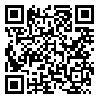Volume 15, Issue 3 (Vol.15, No.3 2019)
irje 2019, 15(3): 289-299 |
Back to browse issues page
Download citation:
BibTeX | RIS | EndNote | Medlars | ProCite | Reference Manager | RefWorks
Send citation to:



BibTeX | RIS | EndNote | Medlars | ProCite | Reference Manager | RefWorks
Send citation to:
TaheriChadorneshin H, Esmaeili M, Farahi M, Tavakoli M. Prevalence, Attitude and Tendency Toward Use of Performance-enhancing Supplements in Athletes in North Khorasan Province. irje 2019; 15 (3) :289-299
URL: http://irje.tums.ac.ir/article-1-6389-en.html
URL: http://irje.tums.ac.ir/article-1-6389-en.html
1- Assistant Professor, Department of Sport Sciences, University of Bojnord, Bojnord, Iran , h.taheri@ub.ac.ir
2- PhD in Sport Management, Department of Sport Management, Sport Science Research Institute, Tehran, Iran
3- MSc in Exercise Physiology, Department of Sports and Youths of North Khorasan, Bojnord, Iran
4- Assistant Professor, Department of Sport Sciences, Islamic Azad University, Bojnurd Branch, Bojnurd, Iran
2- PhD in Sport Management, Department of Sport Management, Sport Science Research Institute, Tehran, Iran
3- MSc in Exercise Physiology, Department of Sports and Youths of North Khorasan, Bojnord, Iran
4- Assistant Professor, Department of Sport Sciences, Islamic Azad University, Bojnurd Branch, Bojnurd, Iran
Abstract: (2832 Views)
Background and Objectives: Nowadays, despite several global initiatives, the use of doping agents has become a problem in athletic societies. Therefore, the aim of the current study was to investigate the prevalence, attitude and tendency toward the use of performance-enhancing supplements among athletes in North Khorasan Province.
Methods: The statistical population of this cross-sectional, descriptive-analytical study was all athletes of North Khorasan Province. Demographic characteristics and data related to doping agents were collected using a researcher-made questionnaire. The validity of the questionnaire was approved by doping experts and its reliability was calculated by Cronbach's alpha. The questionnaires were then distributed using stratified random sampling and 436 questionnaires were collected. Data were analyzed using SPSS software at P<0.05.
Results: The findings showed that 39.2% of the subjects used at least one of the agents for doping. The most common agents were vitamin and protein supplements (36%), minerals (28.7%) and drugs (21.3%). Also, there was a significant negative correlation between the prevalence of using doping agents and age, sport background, and educational level. In addition, attitude and tendency toward the use of doping agents were higher in weightlifters, body builders, and footballers compared to other athletes. Furthermore, knowledge of athletes, awareness about side effects, and the overall awareness of athletes toward performance-enhancing supplements was low.
Conclusion: It is necessary to develop comprehensive educational programs to raise the knowledge and awareness of athletes and coaches toward the use of performance-enhancing supplements in North Khorasan Province.
Type of Study: Research |
Subject:
Epidemiology
Received: 2019/12/15 | Accepted: 2019/12/15 | Published: 2019/12/15
Received: 2019/12/15 | Accepted: 2019/12/15 | Published: 2019/12/15
Send email to the article author
| Rights and permissions | |
 |
This work is licensed under a Creative Commons Attribution-NonCommercial 4.0 International License. |





